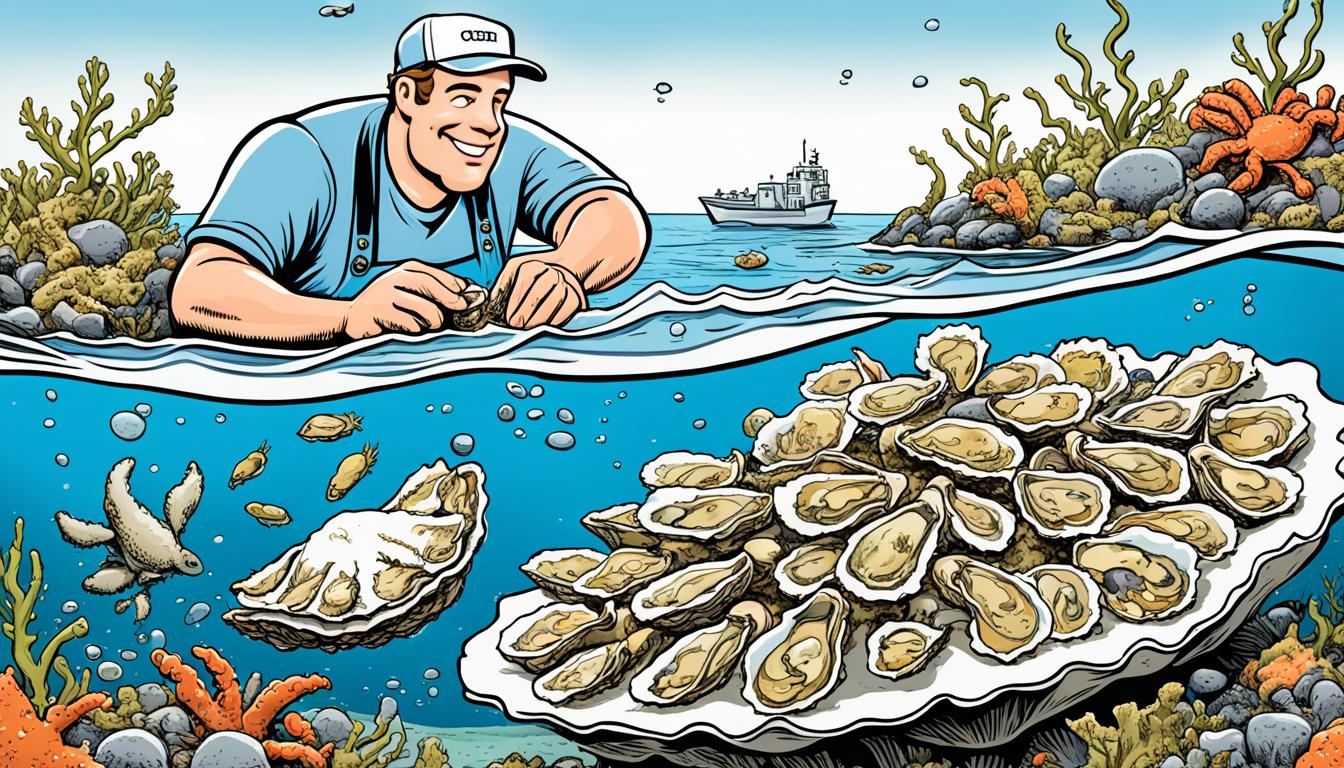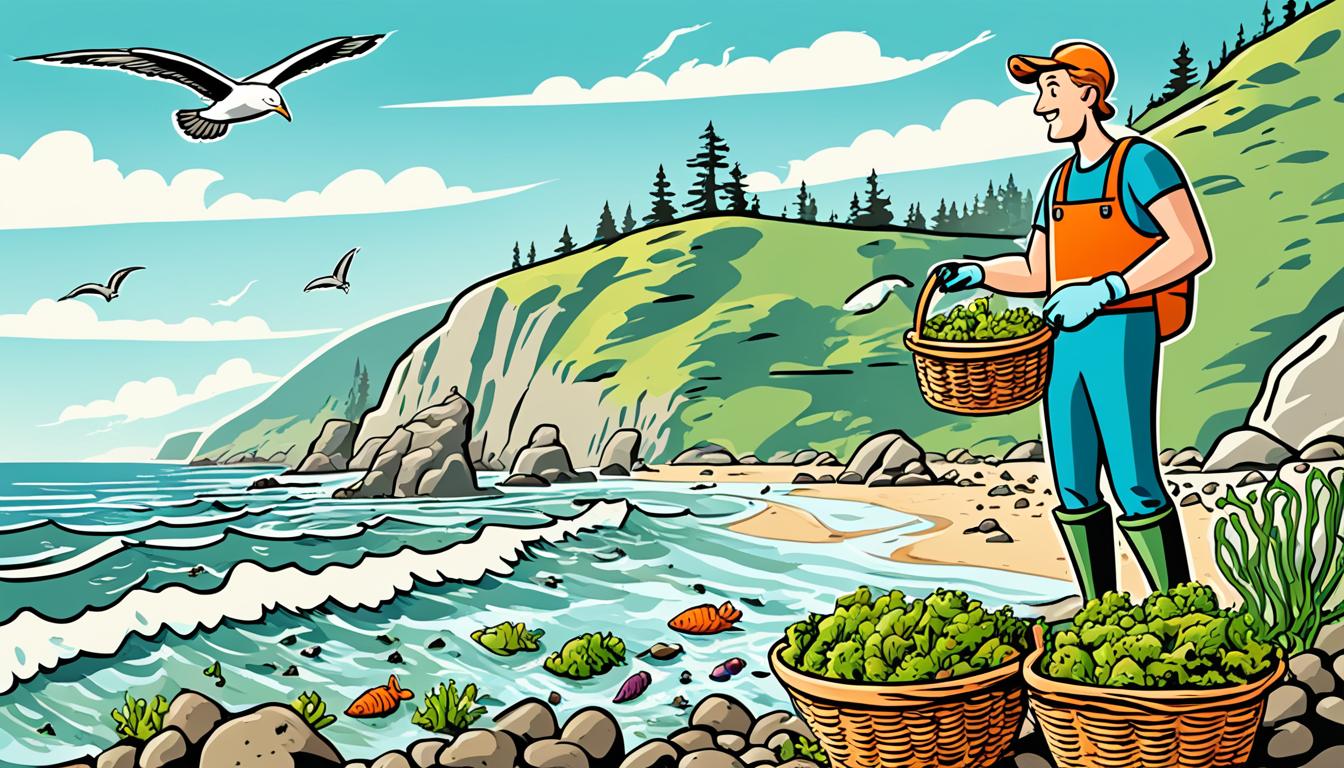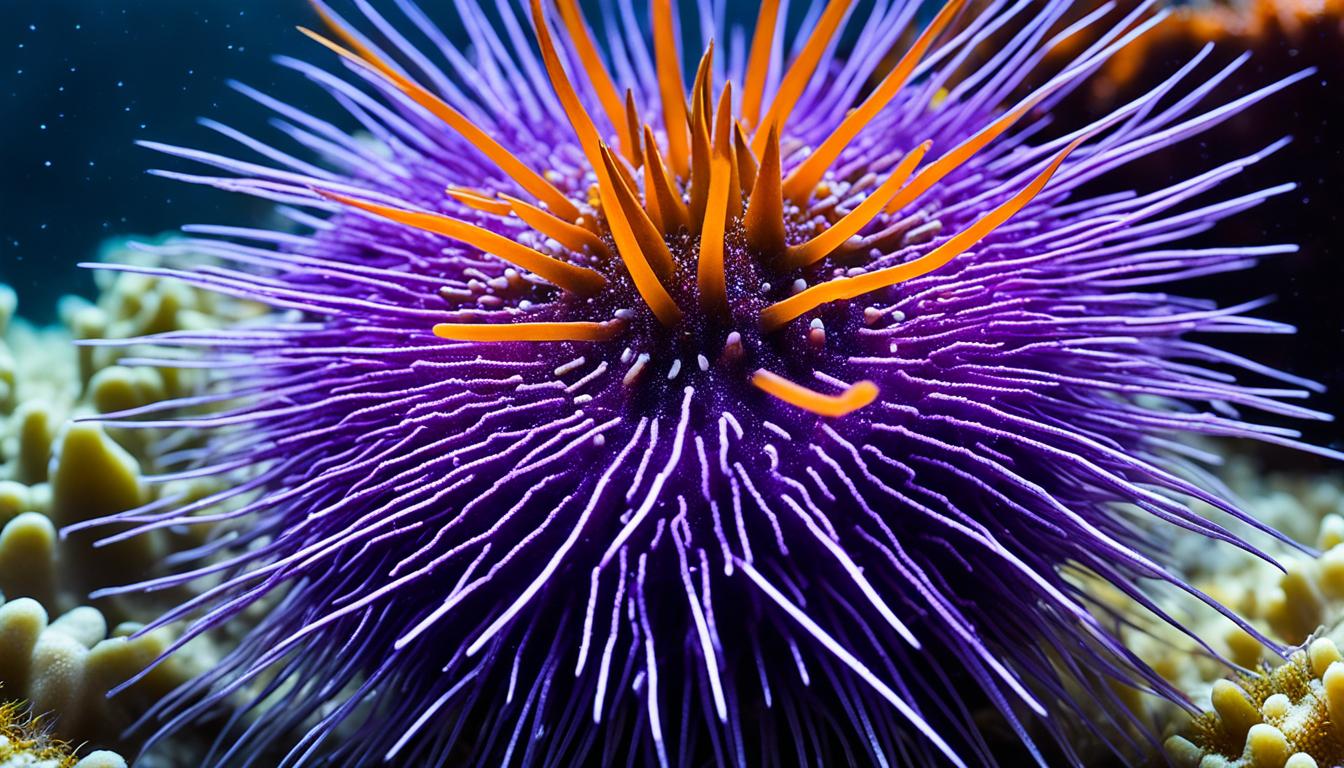Imagine strolling along a picturesque coastal town, the salty breeze filling the air as you pass by quaint seafood restaurants. You can almost taste the fresh, succulent flavors of the shellfish that awaits you. Behind this idyllic scene lies a vast and intricate industry that supports over a million jobs and generates $18 billion in sales revenue in the United States alone. This is the world of shellfish harvesting, where pristine marine ecosystems, fishing communities, and culinary delights converge.
In order to ensure the longevity of this vital industry and protect the environments it relies on, sustainable practices are of utmost importance. The National Oceanic and Atmospheric Administration (NOAA) Fisheries collaborates with a diverse group of stakeholders, including anglers, commercial fishermen, aquaculturists, seafood companies, tribes, scientists, nonprofits, and coastal communities, to manage living marine resources effectively. Through ongoing research, conservation efforts, and partnerships, NOAA Fisheries plays a crucial role in safeguarding our oceans and sustaining the shellfish industry.
Key Takeaways:
- Shellfish harvesting supports over a million jobs and generates $18 billion in sales revenue in the U.S.
- NOAA Fisheries collaborates with various stakeholders to manage marine resources effectively.
- Sustainable practices are essential to protect the environment and ensure the longevity of the shellfish industry.
- Conservation efforts combat illegal and unregulated fishing activities that threaten coastal communities worldwide.
- Certification programs and industry standards promote responsible shellfish farming and harvesting techniques.
The Role of NOAA Fisheries in Supporting Sustainable Shellfish Harvesting
NOAA Fisheries plays a vital role in promoting and supporting sustainable shellfish harvesting practices. As an agency dedicated to ensuring safe and sustainable seafood practices, NOAA Fisheries collaborates with various stakeholders, including anglers, commercial fishermen, aquaculturists, seafood companies, tribes, scientists, nonprofits, and coastal communities, to protect our marine ecosystems and support the economic opportunities of fishing communities.
By conducting economic and socio-cultural research, NOAA Fisheries effectively manages living marine resources, ensuring that they are utilized in a sustainable manner. The agency is committed to fostering diversity and inclusion within seafood communities, promoting equitable access to resources and opportunities.
As the United States is one of the largest consumers and importers of seafood globally, NOAA Fisheries recognizes the need to work closely with foreign entities and international organizations to promote conservation and sustainable fisheries management worldwide. This collaboration is crucial in combating illegal, unreported, and unregulated fishing activities that significantly threaten food security and the economies of coastal communities.
In addition to its global efforts, NOAA Fisheries is actively involved in improving fisheries governance worldwide. The agency leads in promoting the conservation of marine mammals, sharks, tunas, sea turtles, and seabirds on an international scale, furthering the protection of these vital species and their habitats.
NOAA Fisheries is also dedicated to reducing bycatch globally, supporting projects and initiatives that aim to minimize the unintended capture of non-target species. By collaborating with partners across the supply chain, from fishermen to seafood companies, NOAA Fisheries ensures that sustainable seafood reaches consumers while minimizing the environmental impact of fishing practices.
The agency’s work extends beyond sustainable shellfish harvesting to encompass all aspects of fisheries management. Guided by the Magnuson-Stevens Act, NOAA Fisheries works closely with fishery management councils to assess fish stocks, set catch limits, enforce regulations, and reduce bycatch. The National Seafood Strategy outlines NOAA Fisheries’ approach to supporting the U.S. seafood economy in the face of climate change and other stressors, ensuring the long-term sustainability of our fisheries.
In addition to its domestic efforts, NOAA’s Office of International Affairs, Trade, and Commerce engages with other countries to combat illegal fishing and support protected species management. By working collaboratively on a global scale, NOAA Fisheries aims to protect our marine ecosystems and ensure the sustainability of our seafood resources.
Overall, NOAA Fisheries plays a critical role in supporting sustainable shellfish harvesting practices by fostering collaboration, conducting research, enforcing regulations, and promoting responsible fishing practices. Through these efforts, NOAA Fisheries contributes to the economic opportunities of fishing communities, the health of our marine ecosystems, and the availability of sustainable seafood for present and future generations.
| Statistics | Value |
|---|---|
| Total U.S. Seafood Industry Jobs | More than a million |
| Aquaculture Production Value in the U.S. | $1.5 billion |
| Percentage of Earth’s Surface Covered by Aquaculture | Over 70% |
| Percentage of Human Food Production from Aquaculture | Less than 2% |
| Percentage of Ocean-based Human Food Production | Less than 2% |
| Estimated Global Population by 2050 | Nearly 10 billion |
Importance of Shellfish in the Seafood Industry
The seafood industry is a complex and diverse supply chain that goes beyond the people who catch and sell fish. It plays a vital role in supporting over a million jobs and sustaining communities that rely on seafood for their livelihoods, cultural practices, and nutrition. From the fishermen who brave the oceans to the processors who turn the catch into marketable products, every player in the seafood industry contributes to its overall success.
The sustainable seafood industry is particularly crucial as it ensures the long-term well-being of fishing communities and the health of marine ecosystems. By adopting sustainable practices, the seafood industry can continue to thrive in a way that is environmentally responsible and socially beneficial.
Shellfish, a significant component of the seafood industry, holds unique value. Not only are shellfish delicious and nutritious, but they also provide a range of ecosystem services. Oyster reefs, for example, offer substantial benefits with an estimated value of $5,500 to $99,000 per hectare per year, excluding oyster harvesting value. These reefs provide habitat and support biodiversity, enhance water quality, and provide valuable storm surge protection.
Moreover, shellfish play a crucial role in removing harmful pollutants from the water. Market-sized oysters, for instance, can filter up to 45 gallons of water per day, contributing to improved water quality and the overall health of marine environments. Shellfish aquaculture, such as that practiced in Greenwich Bay, Connecticut, removes nitrogen at an estimated value of $2.3 to $5.8 million per year, further highlighting the significant environmental benefits of shellfish farming.

In terms of economic value, the aquaculture production value of shellfish in the United States was estimated at $350 million in 2017, making it the most valuable marine seafood produced through aquaculture in the country. This high value reflects the demand for sustainable and locally sourced shellfish, supporting the growth of coastal communities dependent on the seafood industry.
Shellfish and seaweed aquaculture have another advantage—they require minimal inputs such as feed, freshwater, or fertilizer. This reduces the environmental footprint associated with traditional livestock farming and contributes to a more sustainable and resource-efficient seafood production system. Additionally, shellfish and seaweed farms actively remove nitrogen from the water, with an average removal rate of about 575 pounds per acre each year. This valuable service has a monetary value estimated at $1,321 to $7,739 per acre for shellfish and $753 to $10,110 per acre for seaweed.
Fish abundance is also significantly higher on aquaculture farms compared to other habitats. Aquaculture farms exhibit an average increase of about 94 pounds of extra fish per acre per year, providing additional value to commercial and recreational fisheries. This increase in fish abundance equates to an estimated value of $618 per acre each year for commercial fisheries or $779 per acre each year for recreational fisheries.
However, responsible development of shellfish and seaweed aquaculture is crucial to ensure that the ecosystem benefits are not compromised. Choosing suitable farming sites that do not interfere with other ocean uses or natural ecosystems is essential for maintaining a balance between economic productivity and environmental sustainability.
In conclusion, the seafood industry, with shellfish as a key component, plays a critical role in supporting coastal communities, cultural practices, and nutrition. Sustaining this industry through sustainable practices is vital for the long-term well-being of both fishing communities and marine ecosystems.
Sustainable Practices for Shellfish Harvesting
When it comes to shellfish harvesting, implementing sustainable practices is crucial for minimizing negative impacts on the environment and ensuring the long-term viability of this valuable resource. By adhering to industry regulations and utilizing responsible aquaculture techniques, shellfish farmers can contribute to the preservation of marine ecosystems while maintaining the integrity of their shellfish products.
One of the key principles of sustainable shellfish farming is minimizing the use of chemicals and promoting natural methods of pest control. By employing integrated pest management strategies, farmers can reduce their reliance on harmful chemicals that can negatively impact water quality and marine life. This approach not only protects the environment but also ensures the safety and quality of the final shellfish products.
Proper waste management is also a crucial component of sustainable shellfish farming. By implementing effective waste management systems, farmers can prevent excess nutrients, sediments, and harmful pathogens from polluting surrounding waters. This helps maintain water quality, protect local ecosystems, and minimize any potential negative effects on human health.
In addition to following best practices, shellfish farmers must also comply with industry regulations to ensure the sustainable management of shellfish resources. These regulations may include requirements for water quality monitoring, disease prevention, and product traceability. By adhering to these regulations, farmers contribute to the overall health and sustainability of shellfish populations while maintaining consumer confidence in their products.
Regular monitoring and assessment of shellfish farms are essential to identify and address any potential issues. This includes monitoring water quality, shellfish growth rates, and environmental conditions to ensure that farming practices are sustainable and in line with industry standards. Additionally, ongoing research and technological advancements play a crucial role in improving sustainability practices and identifying innovative solutions for the shellfish farming industry.
Overall, sustainable shellfish farming involves a combination of responsible aquaculture techniques, adherence to industry regulations, and ongoing monitoring and assessment. By prioritizing environmental and social responsibilities, shellfish farmers can contribute to the long-term sustainability of shellfish resources while supporting their local communities and the seafood industry as a whole.

Key Sustainable Practices for Shellfish Harvesting:
- Minimize the use of chemicals and utilize integrated pest management strategies for pest control.
- Implement effective waste management systems to prevent pollution and protect water quality.
- Comply with industry regulations for water quality, disease prevention, and product traceability.
- Regularly monitor and assess shellfish farms to ensure sustainability and identify any potential issues.
- Stay updated on research and technological advancements to improve sustainability practices.
Equipment for Shellfish Harvesting
When it comes to shellfish harvesting, having the right equipment is crucial for efficiency and safety. Whether you are a professional shellfish farmer or an avid enthusiast, having the appropriate tools can make all the difference in your harvesting experience.
Common Tools for Shellfish Harvesting
Here are some essential tools and equipment used for shellfish gathering:
| Tool | Description | Average Price |
|---|---|---|
| Rake | A rake is used to collect shellfish from the seabed or sand. It helps to loosen the soil and sift through the sand to find clams, mussels, or other shellfish. | $74.95 (Long Neck Scratch Rake with a 6-foot handle) |
| Trowel | A trowel is a small handheld tool that is useful for digging and uncovering shellfish, especially in areas with denser soil or rocky substrates. | N/A |
| Bucket | A bucket is essential for collecting and transporting your harvested shellfish. Make sure to choose a sturdy bucket with a lid to prevent spillage during transport. | N/A |
| Scale | A scale is handy for weighing your catch and ensuring compliance with local regulations on take limits. | N/A |
| Boat, Pots, and Bait | For crabbing, having a boat, pots, and bait is essential. The boat allows you to reach deeper waters where crabs are abundant, and the pots and bait attract the crabs for harvesting. | N/A |
Gloves are recommended, but not essential, for shellfish gathering. They can provide protection against sharp shells and potential cuts.
Additional Equipment for On-Site Eating
If you plan to consume your freshly harvested shellfish on-site, there are a few additional tools that are essential for a satisfying dining experience:
- Shucking Knife: A shucking knife is crucial for opening oysters and removing their shells.
- Cooler: To keep your harvested shellfish fresh and safe for consumption, a cooler with ice packs is necessary.
- Plastic Bags: Use plastic bags to store and transport your harvested shellfish safely.
Shellfish Harvesting Equipment Prices
Here is a breakdown of the average prices for some commonly used shellfish harvesting equipment:
| Equipment | Average Price |
|---|---|
| Commercial Grade Rubber Half Bushel Float Ring | $34.95 |
| Long Neck Scratch Rake with a 6-foot handle | $74.95 |
| Heavy Duty Crab Dip Net with a 12″ hoop | $59.95 |
| Seasonal Package 15 | $169.95 |
| Seasonal Package 01 | $129.00 |
| Heavy Duty Crab Dip Net with a 16″ hoop | $64.95 |
| Three Claw Stout Steamer | $44.95 |
| Seasonal Package 16 | $149.95 |
| Quarterback Short Handle Basket Rake | $69.95 |
| Seasonal Package 11 | $69.95 |
| Seasonal Package 17 | $184.95 |
| Scout 4 Youth Clamming Fork | $39.95 |
These prices are approximate and may vary depending on the brand, quality, and location of purchase. It’s always a good idea to do some research and compare prices before making a purchase.
Remember, having the right equipment not only ensures a successful and productive shellfish harvest but also contributes to the overall sustainability of shellfish populations and their habitats. So, gather your tools, check local regulations, and enjoy a fulfilling and responsible shellfish harvesting experience!

Safety Guidelines for Shellfish Harvesting
When it comes to shellfish, it’s essential to prioritize safety to protect consumers from potential illnesses associated with contaminated shellfish. By following established guidelines for handling, storing, and cooking shellfish, you can ensure the safety and quality of the seafood you enjoy.
Obtain Shellfish from Reputable Sources
When purchasing shellfish, it is important to obtain them from reputable sources that prioritize quality control and adhere to safety standards. Look for trusted suppliers who have a track record of providing safe and high-quality shellfish.
Follow Shellfish Quality Control Measures
Shellfish undergo regular quality control measures to ensure they meet safety standards. These measures include inspections, testing, and monitoring conducted by regulatory agencies and industry organizations to detect and prevent potential contamination. By choosing shellfish that have undergone quality control, you can have peace of mind knowing that they meet the required safety standards.
Handle Shellfish Properly
Proper handling of shellfish is crucial to prevent contamination and maintain their freshness. Here are some guidelines to follow: Proper refrigeration is essential, keeping shellfish at temperatures just above freezing to minimize bacterial growth. Additionally, it’s important to avoid cross-contamination by storing them separately from other types of food. If you’re also interested in learning about how to dry age fish, the process involves carefully controlled temperatures and humidity levels to enhance flavor and texture over time.
- Keep shellfish chilled at temperatures between 0 to 4 degrees Celsius to slow down the growth of bacteria.
- Refrigerate freshly cooked shellfish in containers for 1 to 4 days to maintain their quality.
- If storing shellfish for an extended period, consider freezing them. Frozen shellfish can be stored for 3 to 4 months.
- Be aware of the recommended shelf-life durations for different shellfish. For example, oysters should be consumed within 7-10 days when fresh in shell, and scallops within 2-3 days.
Cook Shellfish at Appropriate Temperatures
Cooking shellfish at appropriate temperatures is essential to destroy harmful organisms that may be present. The FDA recommends cooking shellfish to an internal temperature of 145°F (63°C). This temperature helps eliminate Vibrio bacteria and most other potential pathogens, ensuring the safety of the shellfish.
Be Mindful of Shellfish-Related Illnesses
Consuming contaminated shellfish can lead to various illnesses, including infections from Vibrio parahaemolyticus, Hepatitis A, Norovirus, Paralytic Shellfish Poisoning (PSP), Diarrhetic Shellfish Poisoning (DSP), and Amnesic Shellfish Poisoning (ASP). Symptoms can range from diarrhea, abdominal discomfort, and nausea to more severe conditions, such as paralysis, difficulty breathing, and even death in extreme cases. It is essential to be aware of these risks and take necessary precautions.

By following these safety guidelines for shellfish harvesting and consumption, you can confidently enjoy the delicious flavors of shellfish while maintaining your health and well-being.
| Health Risk | Symptoms | Onset of Symptoms |
|---|---|---|
| Vibrio parahaemolyticus | Diarrhea, abdominal discomfort, nausea, fever | Less than an hour to several days |
| Hepatitis A | Fatigue, nausea, jaundice | 15 to 50 days |
| Norovirus | Diarrhea, vomiting, stomach cramps | 12 to 48 hours |
| Paralytic Shellfish Poisoning (PSP) | Numbness, tingling, respiratory paralysis | 30 minutes to 12 hours |
| Diarrhetic Shellfish Poisoning (DSP) | Diarrhea, nausea, vomiting, abdominal pain | 30 minutes to 12 hours |
| Amnesic Shellfish Poisoning (ASP) | Memory loss, confusion, seizures, coma | 24 hours to 2 weeks |
Methods for Shellfish Farming
Shellfish farming involves various methods that are tailored to the species being cultivated and the geographic location of the farm. These methods can be categorized into three main types: bottom culture, suspended culture, and on-bottom culture.
Bottom culture is a traditional method where shellfish are grown directly on the seabed. This method is commonly used for oyster farming and offers several advantages. One of the key benefits is robust shell production, which can be attributed to mineral absorption and exposure to wave action during rough weather. Bottom culture also allows for natural feeding and grow-out, resulting in high-quality oysters. However, there are potential disadvantages to consider. Oysters grown in bottom culture may be susceptible to suffocation, predator attacks, and being carried away by ice.
Suspended culture methods are used to grow shellfish in water columns. These methods provide protection against weather-related losses and can potentially yield better overall production. Common suspended culture methods include:
- Cage culture: Oyster grow-out mesh bags are housed in cages, floating in water. This method requires stable bottom conditions to prevent sinking into mud.
- Rack-and-bag culture: Oysters are tied to steel rebar racks and depend on the tidal range for access to the bags.
- Tray culture: Oysters are grown in trays, often stacked for space efficiency on beaches.
- Surface or floating culture: Oysters are kept in floating mesh bags that remain on the water’s surface, providing constant wave action for natural tumbling.
- Suspended culture: Oysters are hung from buoys floating on the surface, allowing for constant movement with tides to promote growth.
On-bottom culture combines elements of both bottom and suspended culture. It is a flexible approach where oyster growers combine various grow-out methods to suit their specific needs. This method allows farmers to experiment and find effective approaches tailored to their geography, water depth, nutrient availability, and environmental considerations.
Ultimately, the choice of shellfish farming method depends on the specific goals and resources of the farmer. It is essential to carefully evaluate and manage the advantages and considerations of each method to ensure sustainable and successful shellfish farming.
Chart: Shellfish Farming Methods
| Method | Description |
|---|---|
| Bottom Culture | Shellfish grown directly on the seabed. Robust shell production, potential risks of oyster loss. |
| Suspended Culture | Shellfish grown in water columns using racks, bags, trays, or hanging from buoys. Protection against weather-related losses, potentially higher overall yield. |
| On-Bottom Culture | Combination of bottom culture and suspended culture methods. Flexibility to experiment and adapt to specific geographic and environmental conditions. |

Regulations for the Shellfish Industry
The shellfish industry plays a significant role in supporting coastal communities and the seafood supply chain. To ensure the sustainability of shellfish resources and maintain food safety standards, various government agencies regulate the industry. These regulations cover shellfish harvesting, farming, and processing operations to protect both the environment and public health.
In Louisiana, oyster harvesting is subject to specific regulations enforced by the state’s food safety and wildlife and fisheries departments. These regulations aim to maintain the quality and safety of shellfish products and ensure compliance with environmental standards.
Similarly, California places a strong emphasis on seafood and shellfish safety, dedicating resources to regulate and oversee the industry. These efforts contribute to the overall well-being of fishing communities and the protection of marine ecosystems.
The Washington State Department of Health plays a crucial role in the commercial shellfish industry by providing licenses, certifications, and permits to ensure the industry’s compliance with health and safety regulations. These measures help maintain the integrity of shellfish products and protect consumer well-being.
In Massachusetts, shellfish propagation permits are offered for aquaculture, encouraging sustainable practices. By promoting responsible breeding and farming methods, the state supports the long-term viability of shellfish resources.
The Rhode Island Department of Environmental Management conducts shellfish water quality monitoring as part of its comprehensive inspection program. This program ensures that shellfish harvesting areas meet established safety standards, protecting both consumers and the environment.
Alaska has implemented a food safety and sanitation program specifically tailored for shellfish resources. This program encompasses rigorous inspection and monitoring processes to uphold the highest standards of food safety in shellfish harvesting, processing, and distribution.
The New Jersey Division of Fish and Wildlife oversees shellfisheries, underscoring the significance of the industry in the state. By enforcing regulations and promoting sustainable practices, New Jersey ensures the protection and responsible management of its shellfish resources.
Pennsylvania requires seafood and shellfish processors and distributors to obtain registration and certification to maintain quality standards. These regulations contribute to the overall safety and reliability of seafood products in the state.
Texas Parks & Wildlife enforces shellfish regulations to ensure compliance and sustainability in the industry. By overseeing various aquatic life, including shrimp, crab, and oyster, the state agency contributes to the responsible management of shellfish resources and the protection of natural ecosystems.
In Ohio, the focus is on shellfish processing procedures to uphold sanitation and safety standards in the industry. These regulations help maintain the quality and integrity of shellfish products, ensuring consumer protection.
“Regulations for the shellfish industry play a crucial role in protecting the sustainability of shellfish resources and maintaining food safety standards. By adhering to these regulations, the industry can thrive while safeguarding the environment and public health.” – Ohio Department of Agriculture
Seafood Certification Programs
In addition to government regulations, seafood certification programs provide guidance and establish standards for sustainable shellfish practices. One notable program is the Food Alliance Sustainability Certification for Farmed Shellfish. This certification ensures that farmers follow environmentally responsible practices that support the long-term health of shellfish populations and their surrounding ecosystems.
By implementing these regulations and certifications, the shellfish industry can operate sustainably, ensure food safety, and protect the environment for future generations.

| State | Regulatory Authority | Key Regulations |
|---|---|---|
| Louisiana | Food Safety and Wildlife and Fisheries Departments | Specific regulations for oyster harvesting |
| California | Dedicated resources for seafood and shellfish safety | Emphasis on shellfish safety |
| Washington | Department of Health | Licensing, certification, and permits for commercial shellfish industry |
| Massachusetts | N/A | Shellfish propagation permits for sustainable aquaculture |
| Rhode Island | Department of Environmental Management | Shellfish water quality monitoring as part of inspection program |
| Alaska | N/A | Food safety and sanitation program tailored for shellfish resources |
| New Jersey | Division of Fish and Wildlife | Overseeing shellfisheries |
| Pennsylvania | N/A | Seafood and shellfish registration and certification for processors and distributors |
| Texas | Parks & Wildlife Department | Enforcement of shellfish regulations for various aquatic life |
| Ohio | N/A | Focus on shellfish processing procedures to uphold sanitation and safety standards |
Conclusion
Sustainable shellfish harvesting is crucial for supporting marine ecosystems, fishing communities, and the seafood industry. By implementing best practices and following industry regulations, shellfish farmers and stakeholders play a vital role in ensuring the long-term sustainability of this valuable resource.
Efforts such as the Washington State Shellfish Initiative have already made significant progress, re-opening over 2,000 acres across Puget Sound and creating more opportunities for sustainable shellfish harvesting. However, challenges persist, with some beaches experiencing reduced harvest opportunities due to factors like heat waves impacting shellfish populations.
To address these challenges, it is important to continue supporting research, conservation initiatives, and community outreach. Additionally, opening more accessible shellfish harvesting sites can help relieve pressure on popular areas and spread out harvest effort, creating longer seasons and opportunities for both tribes and the public to engage in sustainable shellfish harvesting practices.
By prioritizing environmental and social responsibilities, shellfish farmers and stakeholders can contribute to the well-being of both ecosystems and communities. Together, we can ensure the continued availability of this valuable seafood resource while preserving the health of our waters and supporting sustainable practices for generations to come.
FAQ
What is sustainable shellfish farming?
How does NOAA Fisheries support sustainable shellfish harvesting?
What is the role of the seafood industry in supporting fishing communities?
What are some best practices for shellfish harvesting?
What equipment is used for shellfish harvesting?
What are the safety guidelines for shellfish harvesting?
What are the different methods for shellfish farming?
What are the regulations for the shellfish industry?
Why is sustainable shellfish harvesting important?
Source Links
- https://www.fisheries.noaa.gov/topic/sustainable-seafood
- https://foodalliance.org/shellfish-farms
- https://www.fisheries.noaa.gov/insight/faces-sustainable-seafood
- https://www.fisheries.noaa.gov/feature-story/aquaculture-supports-sustainable-earth
- https://portal.ct.gov/doag/aquaculture1/aquaculture/environmental-benefits-of-shellfish-aquaculture
- https://www.fisheries.noaa.gov/feature-story/global-study-sheds-light-valuable-benefits-shellfish-and-seaweed-aquaculture
- https://education.nationalgeographic.org/resource/sustainable-fishing/
- https://ncseagrant.ncsu.edu/hooklinescience/what-can-ancient-oyster-fisheries-teach-us-about-sustainable-harvesting-today/
- https://www.themanual.com/food-and-drink/guide-to-gathering-shellfish/
- https://clamming.com/
- http://www.bccdc.ca/resource-gallery/Documents/Educational Materials/EH/FPS/Fish/Shellfishsafetyharvesteradvise.pdf
- https://seagrant.whoi.edu/wp-content/uploads/2018/12/Safe-Seafood-Series-Shellfish-Harvest2.pdf
- https://www.pangeashellfish.com/blog/the-different-methods-of-growing-oysters
- https://www.food-safety.com/articles/8489-guiding-principles-of-shellfish-safety
- https://mde.maryland.gov/programs/marylander/fishandshellfish/pages/index.aspx
- https://www.afdo.org/resources/shellfish-laws-and-guidance/
- https://myfwc.com/fishing/saltwater/recreational/shellfish/
- https://makingwaves.psp.wa.gov/index.php/2023/02/08/shellfish-harvest-in-washington/
- https://www.ncbi.nlm.nih.gov/pmc/articles/PMC5302340/










